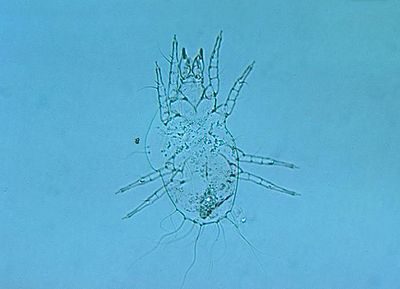
Cat Chiggers
Veterinarian Reviewed on June 20, 2012 by Dr. Janice Huntingford
Cat Chiggers
Throughout the Central U.S., there is a very common and aggravating parasite known as Chiggers, which is scientifically known as the Trombicula mite. They have also been called harvest mites. They have the potential to bite dogs, cats, and people, and the bites cause extreme itching. Thankfully, although it is difficult to prevent being bitten by chiggers, it is very easy to treat the bites and infestation.
Chigger Life Cycle
These kinds of mites prefer to lay their eggs in areas with high vegetation, or soily places. The larvae that hatch out are the ones that are responsible for infesting and biting cats and people. They stay on the animal or person for a few days, using the tissue for nourishment, and then leave. Next, they go into the nymph stage, and finally turn into adults. The entire life cycle takes between 50-55 days. Since it doesn’t get very cold for long periods of time in the Southern U.S., chiggers can reproduce the whole year, but in the Northern states, they usually only have about two hatchings per year.
Chigger Symptoms
When chiggers infest cats, they prefer to live inside the cats ears, similar to Cat Ear Mites, and if you look closely, you can see them. Most people liken their appearance to paprika. For some animals, no symptoms are present, in others, you may notice frequent itching at the spots where the chiggers have become attached. When people are bit, they almost always have a welt, and the itch will be maddening for a few days.
Diagnosing Chiggers
Usually, to be sure that chiggers is what is causing the problem, the area inside the cat’s ear will be scraped, and a sample removed and examined, or a spot on the cat will be scraped and analyzed under a microscope. In some instances, only looking can confirm a chiggers diagnosis.
Prevention and Treatment of Chiggers
Treating chiggers is straightforward, and consists of either a dip comprised of pyrethrin, which is used twice, in two week intervals, or a topical cream can be placed directly on the infested areas on the cat. To stop the intense itching, there are injectable or topical steroids available which are often used on cats to offer them relief from the itching. This will often successfully cease the insane itching; giving your cat some much deserved assistance with the itching.
You cannot get chiggers from your cat, so you can rest easy about that. However, if you and your cat seem to have chiggers at the same time, then you probably were both in the same area where chiggers are known to live. Since chiggers prefer to lay their eggs in the same areas, finding and avoiding that place will be one way to prevent re-infestation from occurring.
Sign up for our newsletter and receive more articles and the latest pet health updates and special offers.
Our Expert
 Dr. Janice Huntingford
Dr. Janice HuntingfordJanice Huntingford, DVM, has been in veterinary practice for over 30 years and has founded two veterinary clinics since receiving her Doctor of Veterinary Medicine at the Ontario Veterinary College, University of Guelph. She has studied extensively in both conventional and holistic modalities. Ask Dr. Jan

